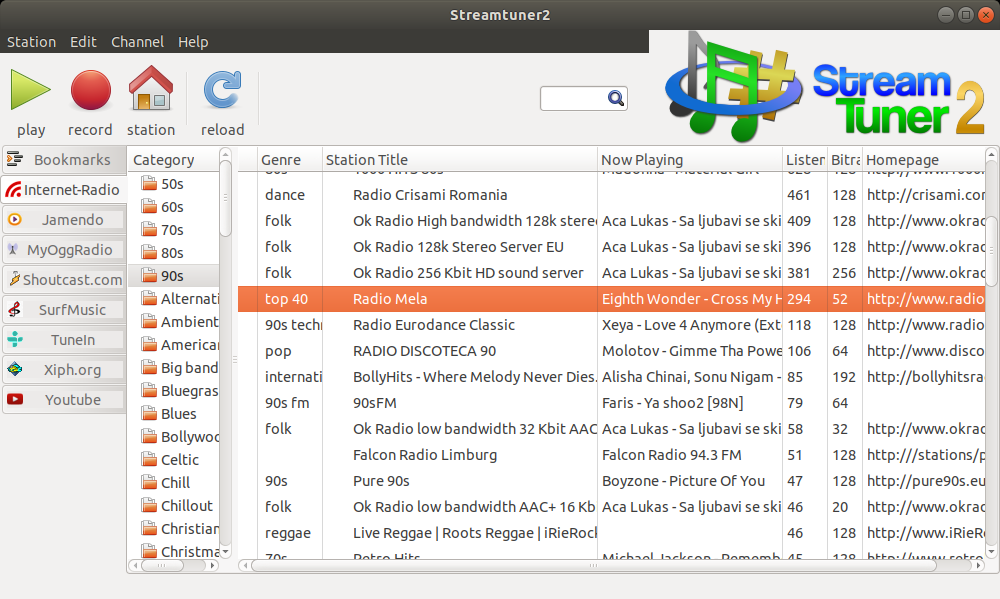Last Updated on September 3, 2020
In Operation
StreamTuner2 lists radio directory services like Shoutcast, Xiph, Live365, MyOggRadio, Jamendo. It allows listening via any audio player, and recording of streams via streamripper.

By default, a good range of services are enabled, but there’s quite a lot more available (see the previous page).
The interface is perfectly adequate although a pale shadow compared to the gorgeous odio.
I’m not a big fan of the oversized play, record, station, and reload icons in the toolbar (as shown in the image above). This also applies to the StreamTuner2 logo. Too much screen estate is sacrificed here. I recommend selecting Edit / Toolbar / Small, which reduces the icons to a manageable size.
When you click on a channel, the software calls your configured audio or video player. Playback is therefore farmed to a media player. The software is fairly stable in operation, although we encountered a few bugs along the way. But no showstoppers.
The software uses about 60MB of RAM, but you’ll need to factor in the external audio player’s resources too.
Next page: Page 4 – Other Features
Pages in this article:
Page 1 – Introduction / Installation
Page 2 – Configuration
Page 3 – In Operation
Page 4 – Other Features
Page 5 – Summary

Yeah, who haven’t used stream tuner. Pity the second iteration crashes a little too much for my taste. At least on Debian
Debian (11) user here, too — Streamtuner2 works flawlessly.
Thanks for the review, I’d never heard of StreamTuner2. Works pretty well on Fedora from a couple of hours usage.
What a Python re-write means is that it will fail to install in some significant percentage of attempts due to installed differences in python installations. As “new, kewl” paradigms in python rise, working installations will mysteriously fail.
What truly amazes me is that members of the python community were some of the MOST vocal about dependency hell
More or less a well accepted solution is to put Python, dependencies and the app into a userland and run it in a container. It gives freedom, flexibility, repeated environments – one of the reason why Docker and Kubernetes are so popular.